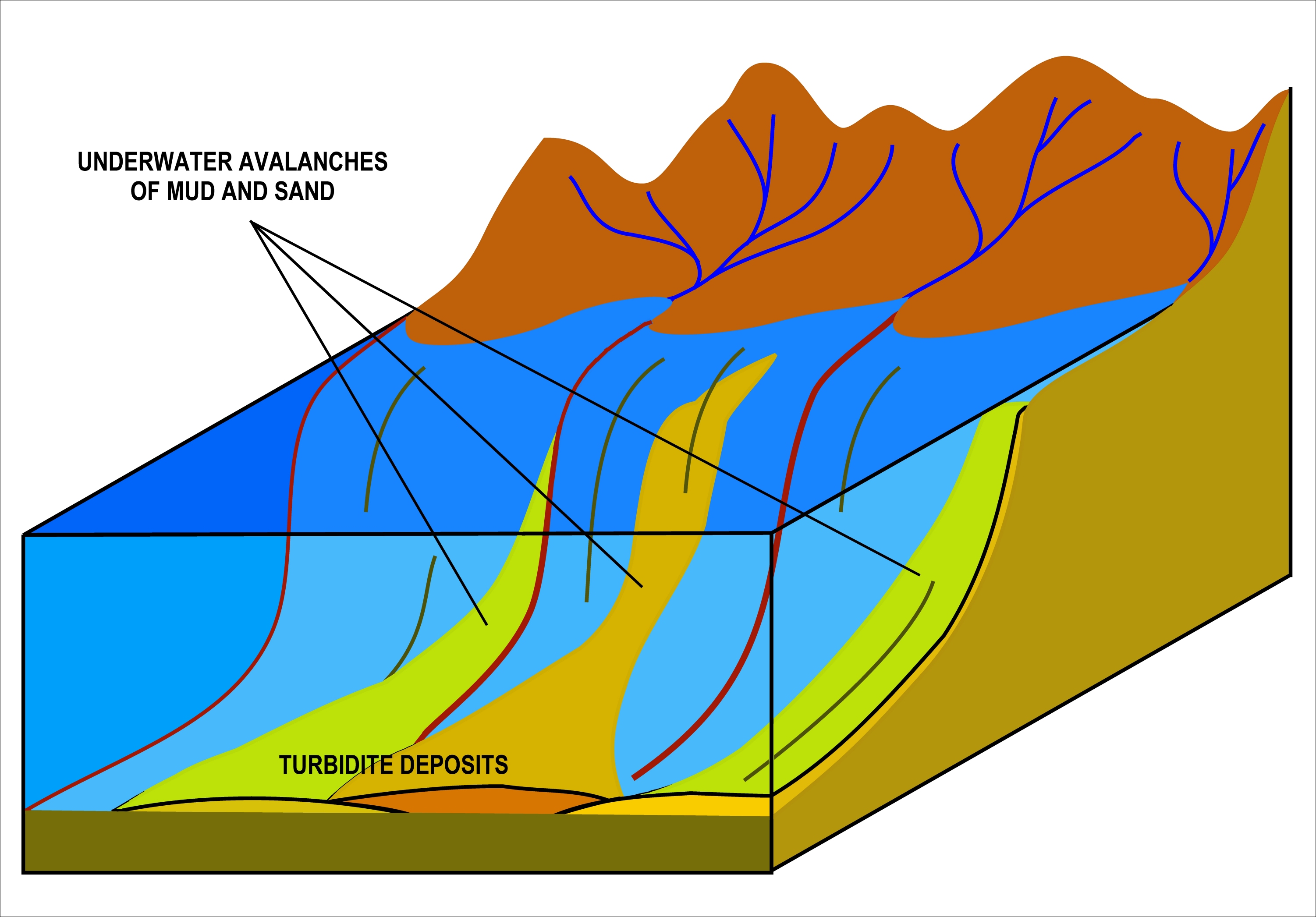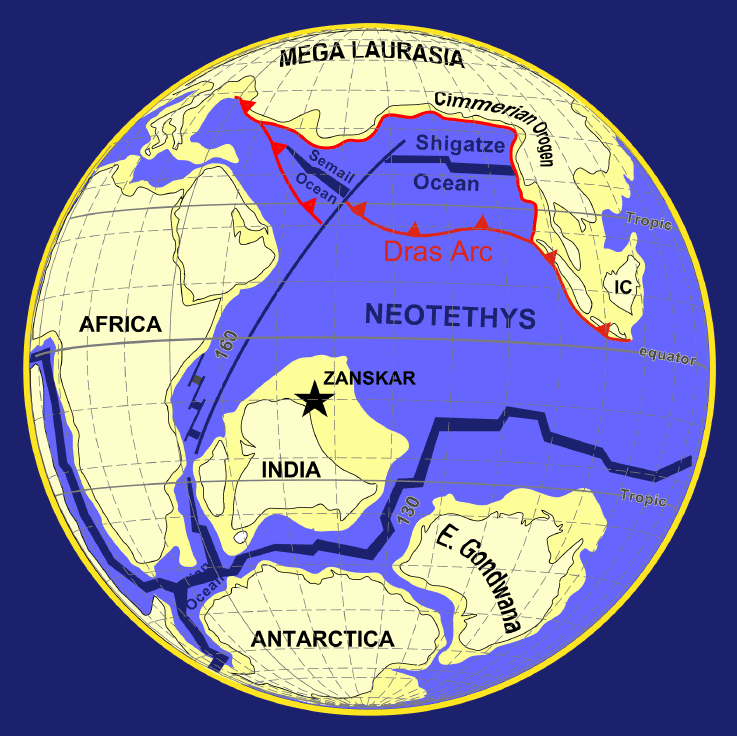|
Engadin Window
The Engadin window or (Lower Engadin window) is a tectonic window that exposes penninic units lying below the austroalpine units in the alpine nappe stack. It has a roughly elliptical shape with the long axis striking northwest-southeast and dimensions of 55 x 17 km. From a geographic perspective the window stretches from Zernez ( Graubünden, Switzerland) to Landeck (Tirol, Austria), or the Lower Engadin. Overview The rocks cropping out in the Engadin window are weakly metamorphosed sediments of middle Jurassic to Eocene age. Most of them are interpreted as deposits from turbidites. They are seen as part of the penninic units similar to the rocks that make up large portions of the Switzerland. Furthermore, the sediments are attributed to the Valais ocean, the Briançonnais microcontinent, and the Piemont-Liguria Ocean. The metamorphic overprint was caused by the closure of the Valais and the Piemont-Liguria during the Paleogene part of the Alpine orogeny. The rocks exper ... [...More Info...] [...Related Items...] OR: [Wikipedia] [Google] [Baidu] |
Turbidite
A turbidite is the geologic deposit of a turbidity current, which is a type of amalgamation of fluidal and sediment gravity flow responsible for distributing vast amounts of clastic sediment into the deep ocean. Sequencing Turbidites were first properly described by Arnold H. Bouma (1962), who studied deepwater sediments and recognized particular "fining-up intervals" within deep water, fine-grained shales, which were anomalous because they started at pebble conglomerates and terminated in shales. This was anomalous because within the deep ocean it had historically been assumed that there was no mechanism by which tractional flow could carry and deposit coarse-grained sediments into the abyssal depths. Bouma cycles begin with an erosional contact of a coarse lower bed of pebble to granule conglomerate in a sandy matrix, and grade up through coarse then medium plane parallel sandstone; through cross-bedded sandstone; rippled cross-bedded sand/silty sand, and finally lami ... [...More Info...] [...Related Items...] OR: [Wikipedia] [Google] [Baidu] |
Geology Of The Alps
The Alps form part of a Cenozoic orogenic belt of mountain chains, called the Alpide belt, that stretches through southern Europe and Asia from the Atlantic all the way to the Himalayas. This belt of mountain chains was formed during the Alpine orogeny. A gap in these mountain chains in central Europe separates the Alps from the Carpathians to the east. Orogeny took place continuously and tectonic subsidence has produced the gaps in between. The Alps arose as a result of the collision of the African and Eurasian tectonic plates, in which the Alpine Tethys, which was formerly in between these continents, disappeared. Enormous stress was exerted on sediments of the Alpine Tethys basin and its Mesozoic and early Cenozoic strata were pushed against the stable Eurasian landmass by the northward-moving African landmass. Most of this occurred during the Oligocene and Miocene epochs. The pressure formed great recumbent folds, or ''nappes'', that rose out of what had been the Alp ... [...More Info...] [...Related Items...] OR: [Wikipedia] [Google] [Baidu] |
Vorarlberg
Vorarlberg ( , ; gsw, label=Vorarlbergisch, Vorarlbearg, , or ) is the westernmost States of Austria, state () of Austria. It has the second-smallest geographical area after Vienna and, although it also has the second-smallest population, it is the state with the second-highest population density (also after Vienna). It borders three countries: Germany (Bavaria and Baden-Württemberg via Lake Constance), Switzerland (Grisons and Canton of St. Gallen, St. Gallen), and Liechtenstein. The only Austrian state that shares a border with Vorarlberg is Tyrol (state), Tyrol, to the east. The capital of Vorarlberg is Bregenz (29,698 inhabitants), although Dornbirn (49,845 inhabitants) and Feldkirch, Vorarlberg, Feldkirch (34,192 inhabitants) have List of cities and towns in Austria, larger populations. Vorarlberg is also the only state in Austria in which the local dialect is not Austro-Bavarian dialects, Austro-Bavarian, but rather an Alemannic dialects, Alemannic dialect; it therefore ha ... [...More Info...] [...Related Items...] OR: [Wikipedia] [Google] [Baidu] |
Tauern Window
The Hohe Tauern window is a geological structure in the Austrian Central Eastern Alps. It is a window (in German ''fenster'') in the Austroalpine nappes where high-grade metamorphic rocks of the underlying Penninic nappes crop out. The structure is caused by a large dome-like antiform in the nappe stacks of the Alps. The relatively hard rocks of the Hohe Tauern window are more resistant to erosion, so the window has a high relief. The mountain chains thus formed are called the Hohe Tauern. Most of Austria's highest mountains are in the Hohe Tauern, among them the Großglockner (3798 m) and Großvenediger (3674 m). See also * References External links * * Geology of the Alps Structural geology Geology of Austria Geology of Italy Window A window is an opening in a wall, door, roof, or vehicle that allows the exchange of light and may also allow the passage of sound and sometimes air. Modern windows are usually glazed or covered in some other transparent or translu ... [...More Info...] [...Related Items...] OR: [Wikipedia] [Google] [Baidu] |
Blueschist Facies
Blueschist (), also called glaucophane schist, is a metavolcanic rock that forms by the metamorphism of basalt and rocks with similar composition at high pressures and low temperatures (), approximately corresponding to a depth of . The blue color of the rock comes from the presence of the predominant minerals glaucophane and lawsonite. Blueschists are schists typically found within orogenic belts as terranes of lithology in faulted contact with greenschist or rarely eclogite facies rocks. Petrology Blueschist, as a rock type, is defined by the presence of the minerals glaucophane + ( lawsonite or epidote ) +/- jadeite +/- albite or chlorite +/- garnet +/- muscovite in a rock of roughly basaltic composition. Blueschist often has a lepidoblastic, nematoblastic or schistose rock microstructure defined primarily by chlorite, phengitic white mica, glaucophane, and other minerals with an elongate or platy shape. Grain size is rarely coarse, as mineral growth is retarded b ... [...More Info...] [...Related Items...] OR: [Wikipedia] [Google] [Baidu] |
Paleogene
The Paleogene ( ; British English, also spelled Palaeogene or Palæogene; informally Lower Tertiary or Early Tertiary) is a geologic period, geologic period and system that spans 43 million years from the end of the Cretaceous Period million years ago (annum, Mya) to the beginning of the Neogene Period Mya. It is the beginning of the Cenozoic Era of the present Phanerozoic Eon. The earlier term Tertiary Period was used to define the span of time now covered by the Paleogene Period and subsequent Neogene Period; despite no longer being recognised as a formal stratigraphy, stratigraphic term, 'Tertiary' is still widely found in earth science literature and remains in informal use. Paleogene is often abbreviated "Pg" (but the United States Geological Survey uses the abbreviation PE for the Paleogene on the Survey's geologic maps). During the Paleogene, evolution of mammals, mammals diversified from relatively small, simple forms into a large group of diverse animals in the wake of ... [...More Info...] [...Related Items...] OR: [Wikipedia] [Google] [Baidu] |
Piemont-Liguria Ocean
The Piemont-Liguria basin or the Piemont-Liguria Ocean (sometimes only one of the two names is used, for example: Piemonte Ocean) was a former piece of oceanic crust that is seen as part of the Tethys Ocean. Together with some other oceanic basins that existed between the continents Europe and Africa, the Piemont-Liguria Ocean is called the Western or Alpine Tethys Ocean. Plate tectonic history The Piemont-Liguria Ocean was formed in the Jurassic period, when the paleocontinents Laurasia (to the north, with Europe) and Gondwana (to the south, with Africa) started to move away from each other. The oceanic crust that formed in between the two continents became the Piemont-Liguria Ocean. In the Cretaceous period the Piemont-Liguria Ocean lay between Europe (and a smaller plate called the Iberian plate) in the northwest and the Apulian plate (a sub-plate of the African tectonic plate) in the southeast. When the Apulian plate started moving to the northwest in the late Cretaceous, ... [...More Info...] [...Related Items...] OR: [Wikipedia] [Google] [Baidu] |
Briançonnais Zone
The Briançonnais zone or Briançonnais terrane is a piece of continental crust found in the Penninic nappes of the Alps. According to some paleogeographic reconstructions the rocks of the Briançonnais zone were in fact a part of the microcontinent Iberia, that encompassed not only the Iberian Peninsula but also Corsica, Sardinia and the Balearic Islands. Because paleogeographic reconstructions of highly deformed pieces of crust are always difficult, this is disputed among geologists. The Briançonnais zone is named after the French city of Briançon Briançon (, ) is the sole subprefecture of the Hautes-Alpes department in the Provence-Alpes-Côte d'Azur region in Southeastern France. It is the highest city in France at an altitude of , based on the national definition as a community cont .... See also * Microcontinent Iberia References Geology of the Alps Terranes Geology of Switzerland Geology of Austria {{palaeo-geo-stub ... [...More Info...] [...Related Items...] OR: [Wikipedia] [Google] [Baidu] |




